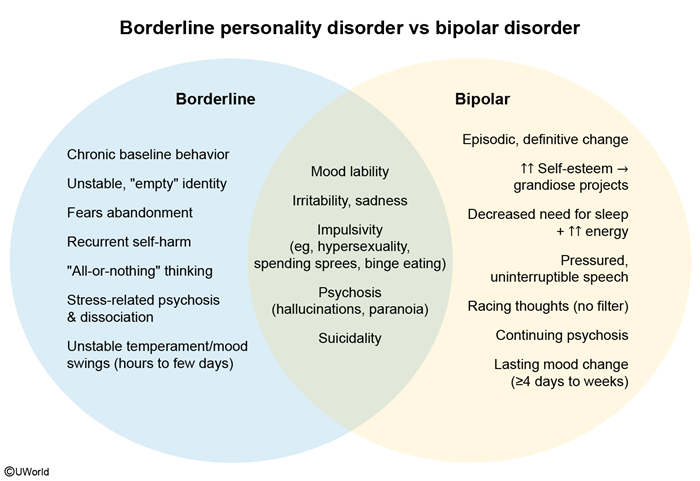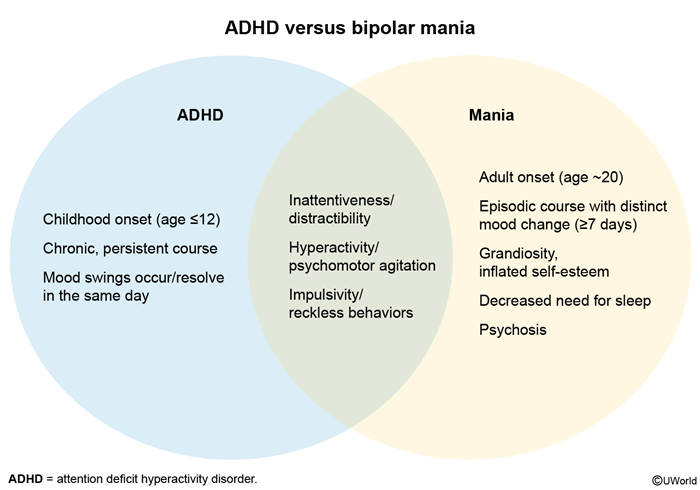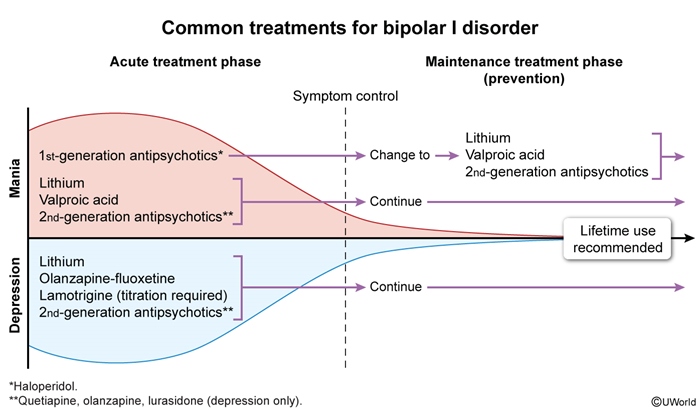Bipolar I Disorder
Article Sections
Introduction
Bipolar I disorder is a chronic mood disorder that involves at least 1 manic episode and typically depressive and hypomanic episodes as well. Manic episodes are characterized by at least 1 week of elevated, expansive, or irritable mood and persistently increased energy. "Bipolar" refers to the 2 poles of mania and depression, mood states that patients fluctuate between or experience simultaneously (ie, episode with mixed features). Mood episodes are recurrent and debilitating, often requiring lifetime maintenance treatment.
Epidemiology and risk factors
The estimated lifetime prevalence of bipolar I disorder is approximately 1%-2% among adults. Prevalence rates are similar in men and women, and the majority of patients with bipolar I disorder experience symptoms by age 25.
Several factors appear to increase the risk of developing bipolar I disorder, including genetic predispostion (eg, first-degree relative with bipolar disorder), environmental factors (eg, adverse childhood experiences, substance use disorder, major life changes/stressors), and biologic factors (eg, postpartum period).
Continue Learning with UWorld
Get the full Bipolar I Disorder article plus rich visuals, real-world cases, and in-depth insights from medical experts, all available through the UWorld Medical Library.
Figures


